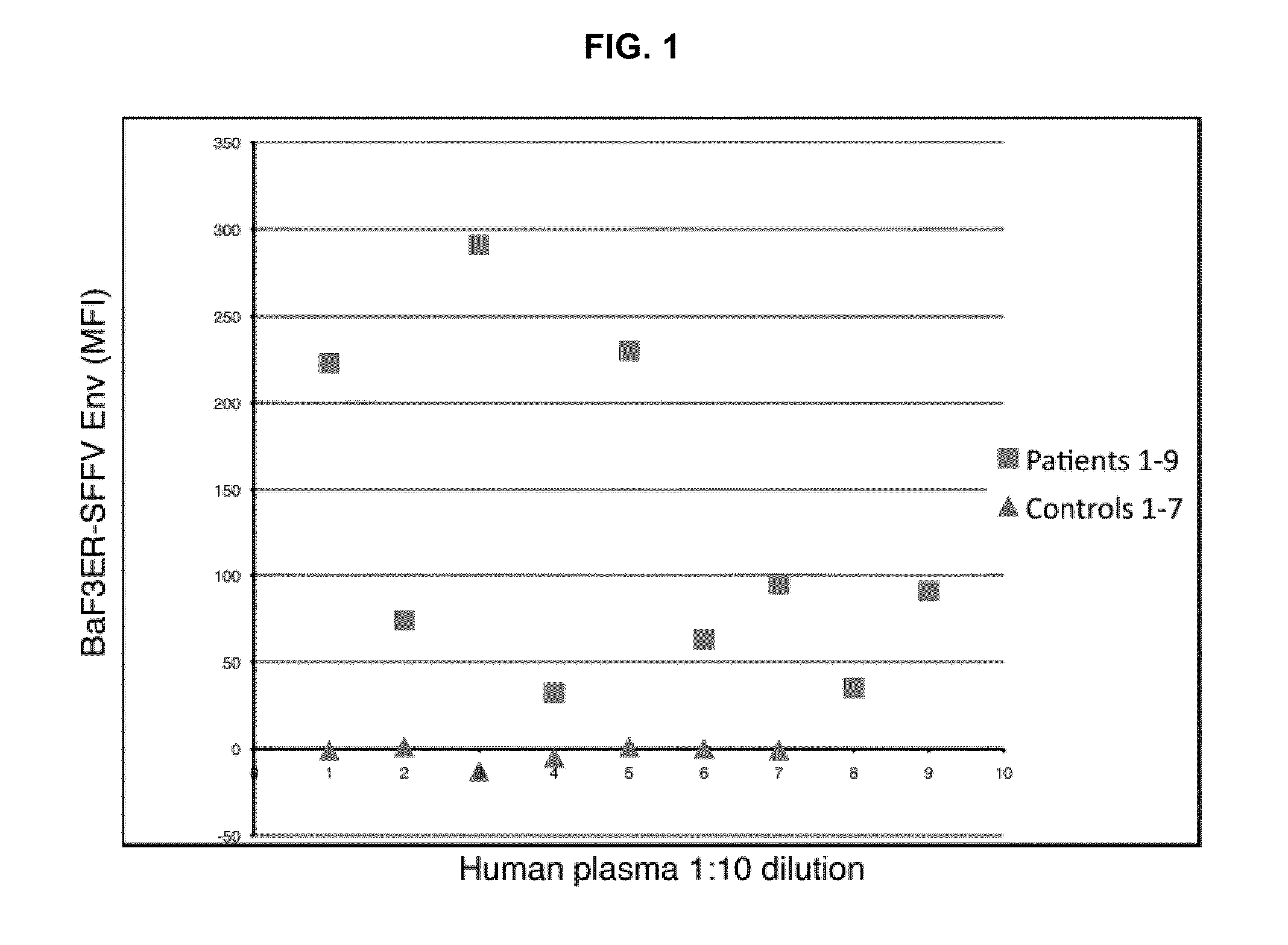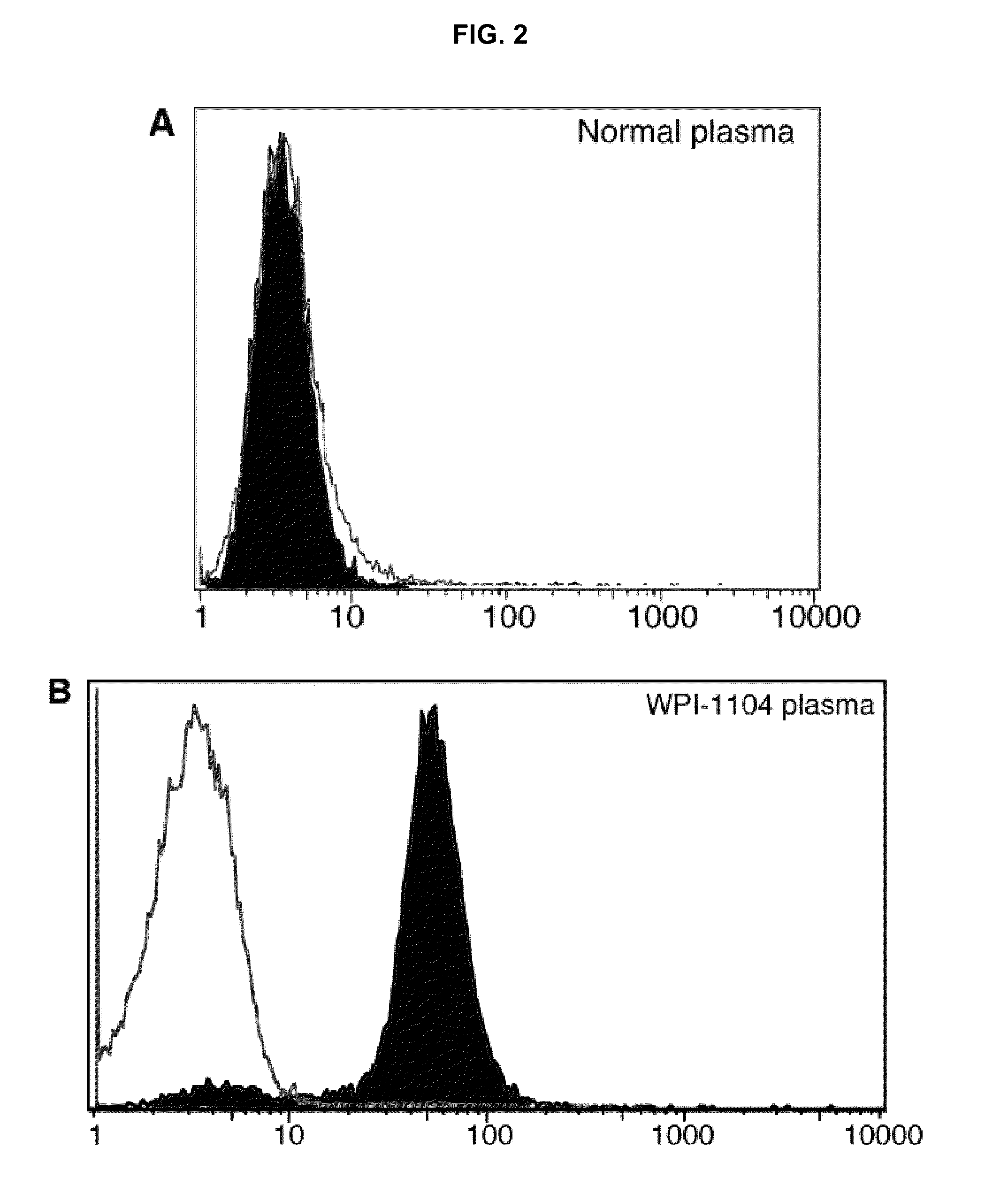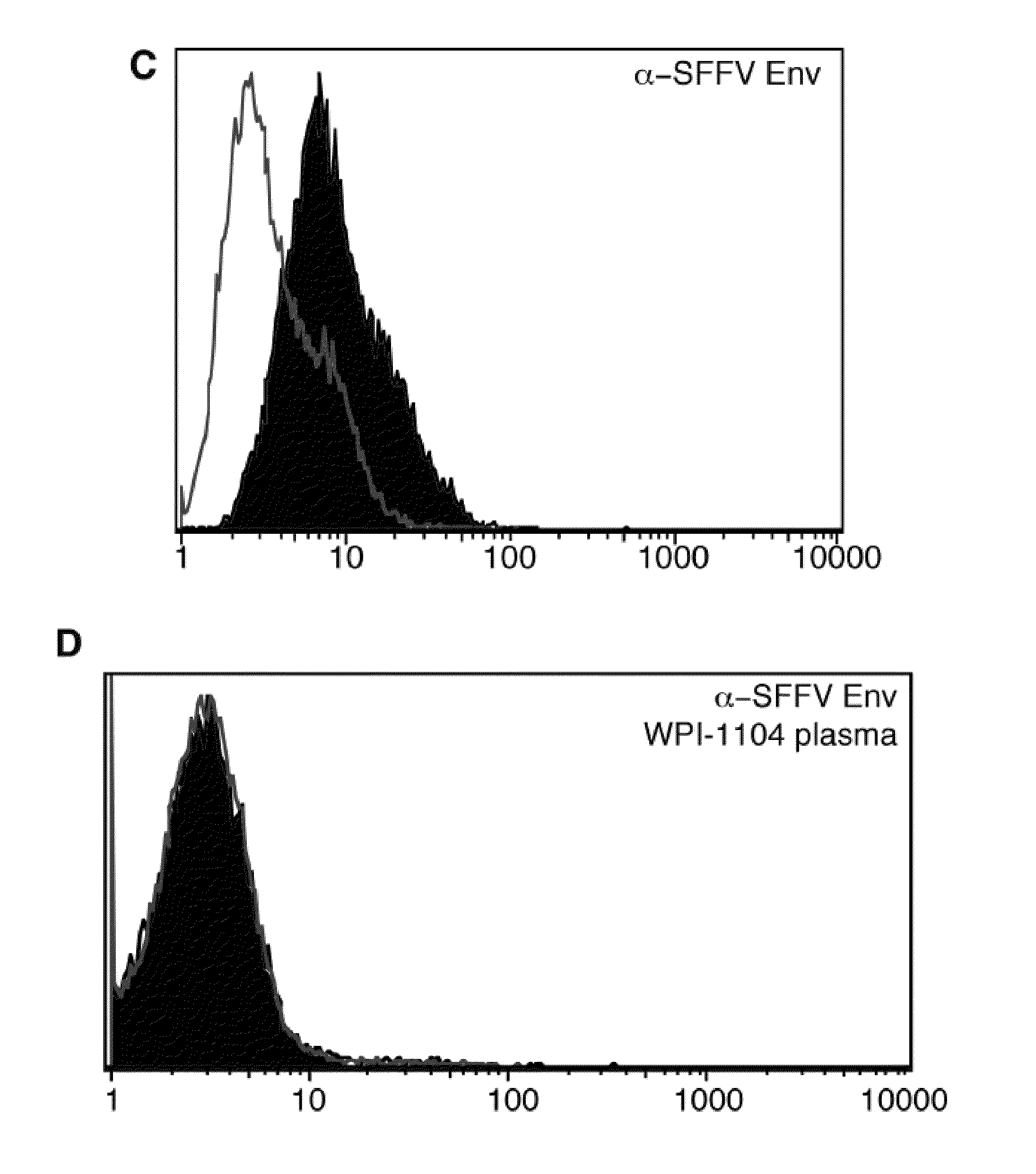Seroconversion assays for detecting xenotropic murine leukemia virus-related virus
a technology of xenotropic murine leukemia and serum antibodies, which is applied in the field of serum antibody detection, can solve the problem that the finding has not been extended to the detection of seroconversion antibodies against xmrv in humans
- Summary
- Abstract
- Description
- Claims
- Application Information
AI Technical Summary
Benefits of technology
Problems solved by technology
Method used
Image
Examples
example 1
[0040]This example illustrates direct detection of antibody against XMRV in plasma from CFS patients.
[0041]Our prior demonstration that infectious virus is present in both T and B lymphocytes from CFS patients is consistent with the tropism of other well-documented targets of human retroviral infection (B. J. Poiesz et al., Proc Natl Acad Sci USA 77, 7415 1980; J. C. Chemann et al., Antibiot Chemother 32, 48, 1983). We investigated whether XMRV stimulated an immune response in these patients, and developed an assay for detecting antibodies to XMRV ENV. This assay uses a murine pro B cell line, BAF-3 (control) and BAF-3 stably expressing SFFVgp55 ENV. In these experiments, Plasma from CFS patients or normal healthy controls was diluted 1:10, reacted with BaF3-ER or BaF3ERSFFV Env cells and analyzed by intracellular flow cytometry (IFC). FIG. 1 shows the difference in mean fluorescence intensity (MFI) between CFS and control plasma direct binding to BaF3ER-SFFV Env cells versus BaF3ER...
example 2
[0042]This example illustrates detection of antibody against XMRV in plasma from CFS patients. In these experiments, as illustrated in FIG. 2, samples of human plasma were assayed by flow cytometry for presence of antibody against XMRV using direct and competitive assays.
[0043]Direct assay of binding of normal plasma with BaF-3-SFFV ENV was negative (FIG. 2A). Furthermore, as shown in FIG. 2B, direct assay of binding of normal plasma with BaF-3 ER FC was also negative. However, a plasma sample from a patient who was previously diagnosed clinically with CFS (designated patient 1104 by the Whittemore Peterson Institute), was found to comprise antibody against XMRV: as shown in FIG. 2B, black area, a 1:10 dilution of plasma was positive in this assay. FIG. 2C illustrates direct binding of 2 μL 7C10 monoclonal anti SFFV Env antibody to BAF3-SFFV gp55 cell line (black area) vs. binding to BaF-3 ER control (light area). FIG. 2D illustrates competition for binding of 7C10 to BAF3-SFFV gp55...
example 3
[0044]This example illustrates detection of antibodies against XMRV in sera of patients, using direct and competitive assays (FIG. 3).
[0045]We investigated whether XMRV stimulates an immune response in CFS patients. For this purpose, we developed a flow cytometry assay that allowed us to detect antibodies to XMRV Env by exploiting its close homology to SFFV Env (Wolff, L., et al., Proc. Nat'l. Acad. Sci. USA 80: 4718-4722, 1983).
[0046]FIG. 3A illustrates no direct binding on BAF3ER control cells. Left panel: binding of human plasma at 1:10 dilution as detected by anti human IgG; right panel: no binding of anti-SFFV env monoclonal (7C10) at 1:10 dilution as detected using an anti rat IgG. Y3 rat hybridoma supernatant served as control. FIG. 3B illustrates direct binding on BAF3ER-SFFV Env cells. Left panel illustrates direct binding of human CFS from patient 1104 but not normal plasma at 1:10 dilution as detected by anti human IgG; right panel illustrates direct binding of anti-SFFV ...
PUM
 Login to View More
Login to View More Abstract
Description
Claims
Application Information
 Login to View More
Login to View More - R&D
- Intellectual Property
- Life Sciences
- Materials
- Tech Scout
- Unparalleled Data Quality
- Higher Quality Content
- 60% Fewer Hallucinations
Browse by: Latest US Patents, China's latest patents, Technical Efficacy Thesaurus, Application Domain, Technology Topic, Popular Technical Reports.
© 2025 PatSnap. All rights reserved.Legal|Privacy policy|Modern Slavery Act Transparency Statement|Sitemap|About US| Contact US: help@patsnap.com



